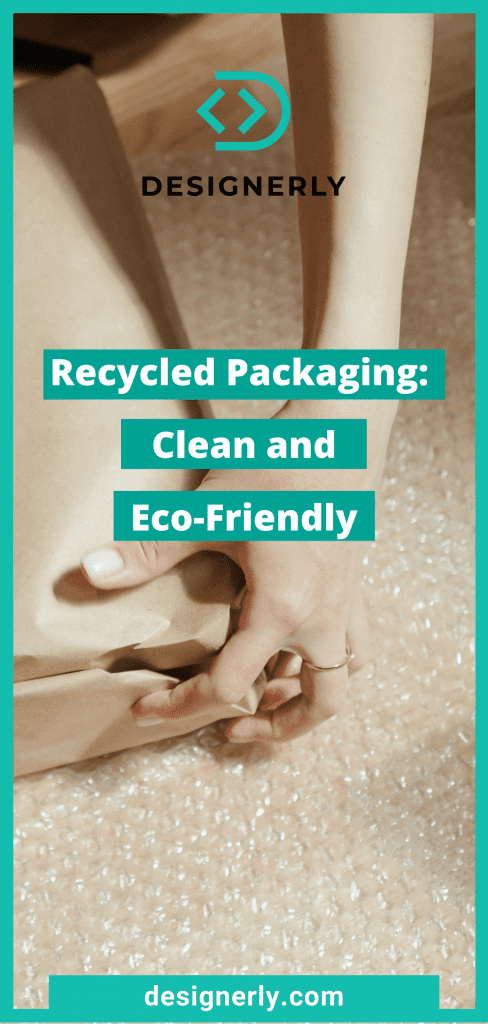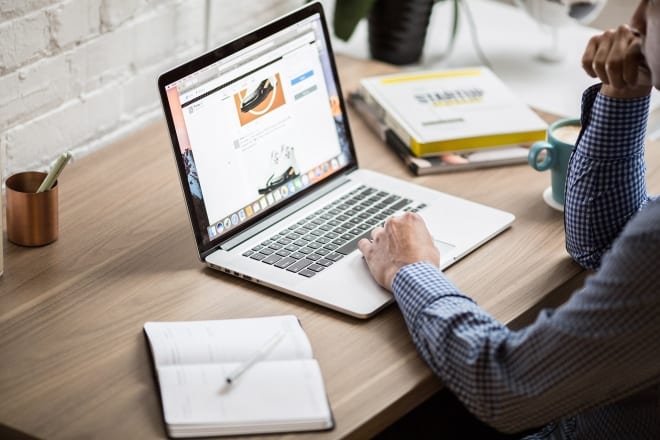There are numerous things to think about in packaging, whether you’re designing a package or figuring out the best way to market a packaged product. Visual presentation is one huge aspect, as are materials and size. The eco-friendly aspect of your packaging also needs consideration. Plastic, for example, contributes to greenhouse gases at every stage of its life cycle. By 2050, this material will make up 13% of the total carbon budget — the equivalent of 615 coal-fired power plants. There’s no way to avoid product packaging waste. but you can reduce it by using recycled packaging.
However, you can reduce it by using recycled materials.
The packaging industry is a $1 trillion machine, up $839 billion since 2015. Today’s consumers have heard the mantra reduce, reuse and recycle. They actively look for brands with a focus on green practices.
Corporations can reduce their carbon footprint in a wide variety of ways. Besides using recycled materials, you can reuse the packages themselves. Remove your product and give the package new life.
Besides just making packaging from recycled materials, you can go further and utilize packages people recycle themselves. Use the packaging for other purposes after they’ve removed your product. Let’s look at several examples.
Think More Broadly Than Recycled Outer Packaging
You’ll commonly see outer packaging made from all or mostly recycled materials, and making that choice is a good first step. However, you can also go further to protect the environment by using soy-based inks and compostable materials. Those are two strategies used by Numi Tea.
Clearly not content with a basic approach to recycled packaging, the company explored options competitors might not even consider. Each Numi Tea package features an “Eco-Responsibility Audit.” It shows what the company conserves annually through its packaging decisions, including over 9,000 trees and four million gallons of water.
Numi Tea specializes in organic varieties, so its target market is arguably made up of people who care about the planet and embrace such packaging.
Create Something New From Your Packaging
You’ll often see recycled packaging that’s compostable, so it eventually goes back into the Earth. There’s also a slight variation of that, in which packaging produces something that comes from the Earth. Forward-thinking manufacturers have dreamed up plantable packaging by infusing the materials with seeds.
A company called Pangea Organics took a zero-waste approach with its packaging by creating a material that’s biodegradable, compostable and plantable, then using it for soap packages. This is a great example of how a company seamlessly connected its products with an eco-friendly packaging.
A person merely has to soak an empty package in water for about one minute and then insert it into approximately an inch of soil. The resultant herbs are part of Pangea Organics’ ingredient list. It allows consumers to familiarize themselves with the company in new ways.
Set New Packaging Trends in Your Industry
You can also use eco-friendly packaging to act as a trendsetter within your industry. PUMA did this when repackaging athletic shoes. Most people are familiar with the cardboard lids used for shoeboxes. But PUMA had a different idea when it launched the Clever Little Bag campaign.
The company created sleeves that keep the shoes in place when they were on display. But become reusable bags once consumers bring them home. This new packaging design uses 65% less paper and even has a built-in handle so shoppers don’t need a separate bag to carry their shoes after purchasing them.
This packaging design required 21 months of work and thousands of failed attempts, but the company says doing away with cardboard shoeboxes saves substantial costs and is more convenient for customers.
PUMA’s showing what’s possible in the shoe industry, a sector that has relied on cardboard boxes for decades. Thanks to these creative ideas, we may soon have different ideas about what constitutes a shoe container.
Educate Customers About Why You’re Choosing Eco-Friendly Packaging
If customers are familiar with your current, non-eco-friendly packaging, it’s especially important to explain why you’re making a move to recycled packaging. Taking a personal tone when explaining your reasons often works very well. It’s also okay to admit switching packaging is a learning experience you’re going through along with the customers.
A company called Demes made an all-in-one moisturizing stick that initially came in a plastic container similar to a roll-on deodorant dispenser. Then, when company representatives were on vacation and strolling along the beach, they noticed plastic waste washed up on the shore, and that sight struck a chord.
After researching options, the company switched to a biodegradable cardboard container that had its environmental perks. It also required changing the product’s formula and was more expensive overall. More recently, the company decided to switch to reusable tins.
It described this packaging evolution on its website, showing a strong example of corporate transparency. If you can do the same when experimenting with new packages, consumers may not be as resistant to change.
Choose Compostable Packaging
According to the U.S. Environmental Protection Agency (EPA), containers and packages created around 80.1 million tons of waste in 2017 — nearly 30% of total waste production.
Large companies have recently come under fire for the waste they produce with products like plastic water bottles. This attention forced industry leaders, such as Nestle, Coca-Cola and Unilever, to focus on solutions that improve the world. The goal is to preserve the planet for future generations instead of leaving it in a pile of waste.
You don’t have to be a huge corporation to change your packaging and reduce waste. One brand taking the lead is Boxed Water. Their answer to the 8.8 million metric tons of plastic thrown into oceans each year is a portable box design. Their product is biodegradable, unlike plastic, which takes around 700 years to break down.
As a bonus, Boxed Water plants two trees every time someone uses the hashtag #BetterPlanet on social media.
Look for ways you can incorporate biodegradable packaging into your operations. Think about how you can make the world better through your product.
Tap Into Technology to Ramp Up Your Efforts
Sustainability is big business in America and around the world. Yet there’s a lot of room for growth when it comes to corporate and individual recycling.
In response, AMP Robotics is developing ways to identify recyclable products and sort them from other waste. Experts say robotics and artificial intelligence will play a significant role. As a result, the U.S.recycling market will increase in efficiency.
Companies can turn the situation into profit generation by taking used materials to recycling centers. By utilizing recycled packaging and donating used materials, you can participate in a sustainable, cyclical economy.
While you may not have the funds to create your own robot, you can invest some of your profits into the development of new technology. Share news about advances with your customers and offer them a front-row seat to your green efforts.
Encourage People to Recycle
Even if your company does everything right in selecting eco-friendly packaging, it’s still up to your customers to complete the process. They must recycle the empty containers. A company called Lush Cosmetics has a cool incentive program to get people motivated about recycling.
Lush Cosmetics specializes in handmade body products ranging from lotions to facial scrubs. Many items come in black pots made entirely from recycled materials. However, the company also has an exchange program where people can bring five empty pots to their local Lush stores and receive a free face mask for their efforts.
Hopefully you’re now more inspired about possibilities within recycled packaging. Keep an open mind and a flexible attitude when working with different options. And always listen to customer feedback to stay on the right track.

About The Author
Eleanor Hecks is the Editor-in-Chief of Designerly Magazine, an online publication dedicated to providing in-depth content from the design and marketing industries. When she's not designing or writing code, you can find her exploring the outdoors with her husband and dog in their RV, burning calories at a local Zumba class, or curled up with a good book with her cats Gem and Cali.
You can find more of Eleanor's work at www.eleanorhecks.com.






Do it your self recyclable packaging, thank you for this unique idea hope to see this kind of message very soon.